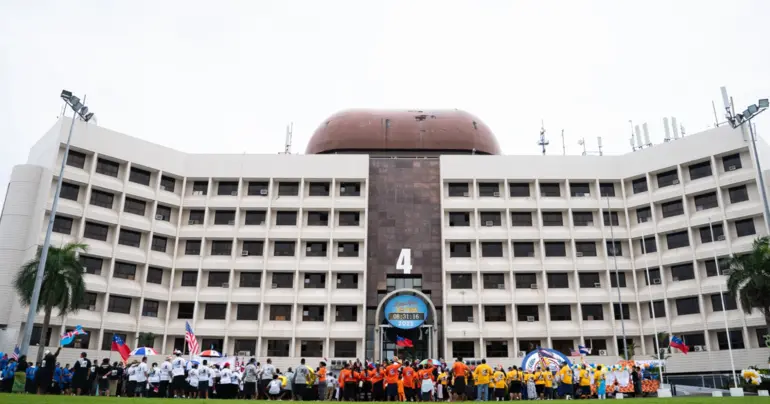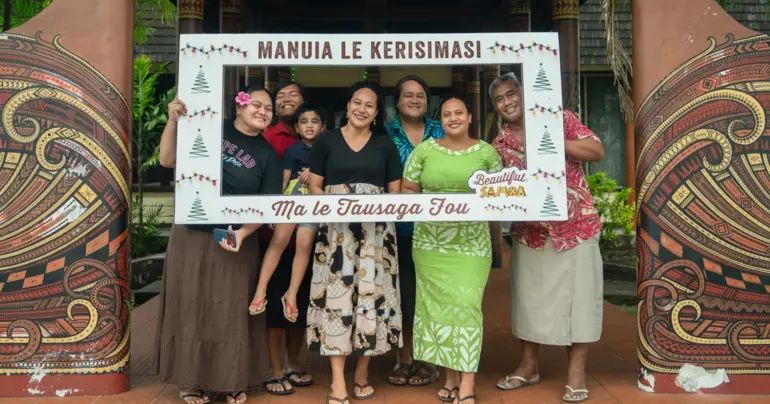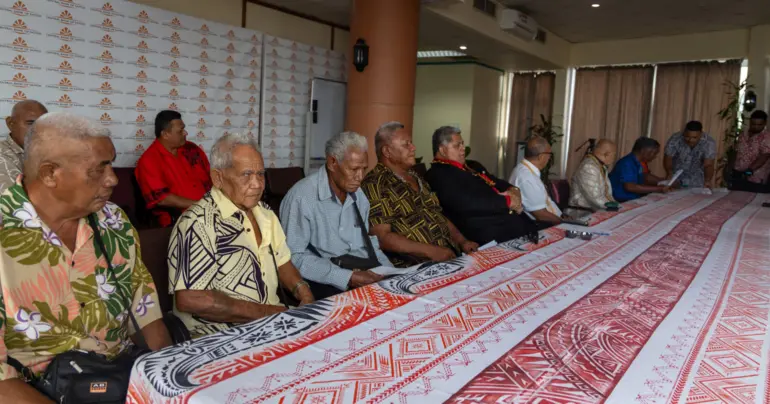On aid projects, Samoa must be choosy
 By The Editorial Board
•
25 January 2021, 11:40PM
By The Editorial Board
•
25 January 2021, 11:40PM
The cycle almost seems familiar now.
A showy piece of infrastructure is constructed in partnership with a foreign donor and commissioned in a ceremony and the obligatory ribbon cutting.
Years go by, though, and the sheen starts to come off. And it seems to be doing so at increasingly shorter intervals.
A prime example is the Faleolo International Airport.
The Government was right to hail this $140 million project as a landmark development for Samoa.
Upgrading Faleolo’s size and making it one of the few airports in the Pacific islands, where competition for the tourism dollar is fierce, to have sophisticated touches such as aerobridges made more than a lot of sense for a country to which tourism is so integral.
China’s Ambassador Wang Xuefeng said: “We can’t help marveling at the miracle that was achieved in two years. With the upgraded services, excellent operation capability, and aviation management, Samoa has moved a step further toward the aviation hub in the South Pacific region.”
These were lofty goals indeed; as much hope as money was being invested in this new facility.
And we were among those who cheered along with these statements, writing in praise of the Chinese Government and the World Bank.
But then came what now seems like an all-too-familiar turning point, where a project's aspect seems to change.
It was not much longer than a year after the completion of Faleolo’s upgrade that the Government was plowing money into the construction of an alternative landing strip at Ti’avea.
The Samoa Airport Authority Chief Executive Officer, Silimana’i Ueta Solomona, explained why a second landing strip was needed:
“The extension of Tiavea came about after initial findings of a report being prepared by a research team from Japan stated an elevated risk of Faleolo being inundated from wave action during cyclones due to its proximity to the sea," Silimana’i said.
“Government believes that whilst works are ongoing at Ti’avea, it is the ideal time that the overall airport planning considers an extension to ensure that an alternate is available for continuity of air operations.”
When the Government had learned of Faleolo’s vulnerability we have never been told.
But by 2018 an environmental impact assessment commissioned for the project found that Faleolo was "likely to be subject to flooding either by sea or from freshwater runoff during heavy rains"
The report quoted the Samoa Airport Authority as telling consultants: "[We] will be addressing the vulnerability of this seawall through a redevelopment project in the near future, however at the time of writing this report further detail on this was not available."
The knowledge that the Government was apparently long-aware of the risks of flooding, and we saw the image of water inundating the arrival terminal during the 18 December flooding. Those images add weight to questions about the wisdom of having an airport so close to the sea and at the bottom of a slope packed an extra punch.
Then there was the front page of last weekend’s Sunday Samoan (“New Parliament already leaking”).
The story, about Samoa's new Parliament complex, is strikingly familiar.
The building was hailed as a landmark development for Samoan democracy and its relations with Australia, which jointly funded the project.
“[This] is a celebration for Samoa, celebration for Australia and celebration of what this building symbolizes in terms of democratic governance of our nations,” said Australian Senator Anne Ruston, representing the project's co-funder.
“It also reflects the great skills of Samoan people, the tradesmen working together to create this building; it’s a building for all Samoans.”
Now less than one year later we find that this tribute to Samoan democracy and the skills of its workforce has a leaking roof.
Similar problems occurred when the Justice Ministry was presented with a $200,000 bill to repair a leaking courthouse roof at Mulinu’u that had been constructed by way of a $62.25 million tala project loan from China.
Let us be clear. We do not blame our donor partners and international friends for these mishaps. We have the ultimate say on what is constructed within our borders and who constructs it.
In the case of the Maota Fono, it was a local company, Craig Construction that, according to the Government’s allegations (they have not returned our requests for comment) caused these problems.
It seems there was an inexplicable failure by project managers to have Craig Construction meet a standard condition for major construction work: a deposit to cover possible post-construction teething problems.
“[It needs to be determined why the company] rejected the [Government of Samoa’s] condition to provide a bank guarantee for the partial retention release,” a letter from the Clerk of the Legislative Assembly’s Office read.
Of course, this is not a criticism against infrastructure itself. This country badly needs new infrastructure.
But there is not a never-ending pot of international aid money. One project that gets funding comes to the exclusion of another that does not. And bearly everywhere you look in Samoa there are other, competing use cases for foreign money from housing to roads to promoting export diversity and even to education.
As we approach the future construction of more mega-projects such as the $250-million, Chinese-funded Vaiusu Wharf, the recent past shows we must be more careful with such large expenditure outlays.
The case of the Vaiusu Wharf is one development that has long been in the pipeline but many of its details are yet-to-be revealed.
It was only in 2019 that it was confirmed that the project would cost $250 million..
It is our duty to ensure that aid grants are spent wisely.
Governments have a natural tendency towards building impressive centrepiece projects which make more of a statement than dozens of road upgrades that fracture public attention into smaller pieces.
Given that exports only account for about 30 per cent of our economy, do we really need to spend an amount equal to one-quarter of the national budget on the new wharf? If so, where is the supporting cost-benefit analysis?
There are still several donor-funded projects that we can hold up as examples of transparently managed developments that meet the nation's needs.
One recent example is Samoan-Japanese cooperation on the $43 million Vaisigano Bridge - though the end product still needs to stand the test of time - is one. The bridge solved an obvious public problem; it was managed skillfully, and it resulted in Samoan companies and labourers learning new and valuable skills from their foreign counterparts.
As aid money continues to tumble into Samoa, it is more important than ever that we study future projects closely and manage them wisely.
A good indication that the Government is confident in the merits of a project is if they release its plans for public viewing and scrutiny from the outset, something we believe should be done as a matter of course.
But we believe the ultimate standard by which a prospective project should be judged is whether it improves the lives of the average Samoan, not whether it makes an impressive contribution to the cityscape.
 By The Editorial Board
•
25 January 2021, 11:40PM
By The Editorial Board
•
25 January 2021, 11:40PM










